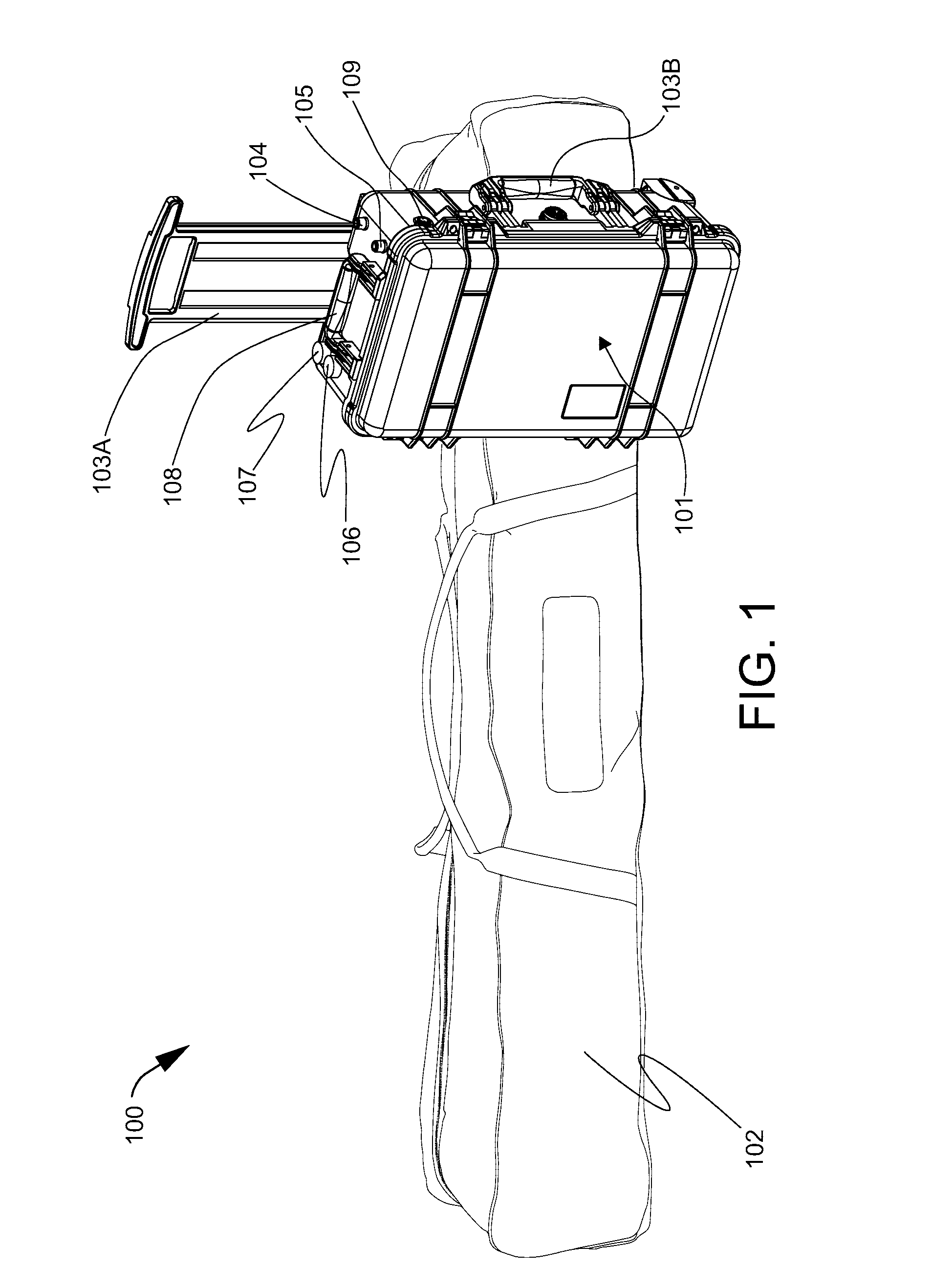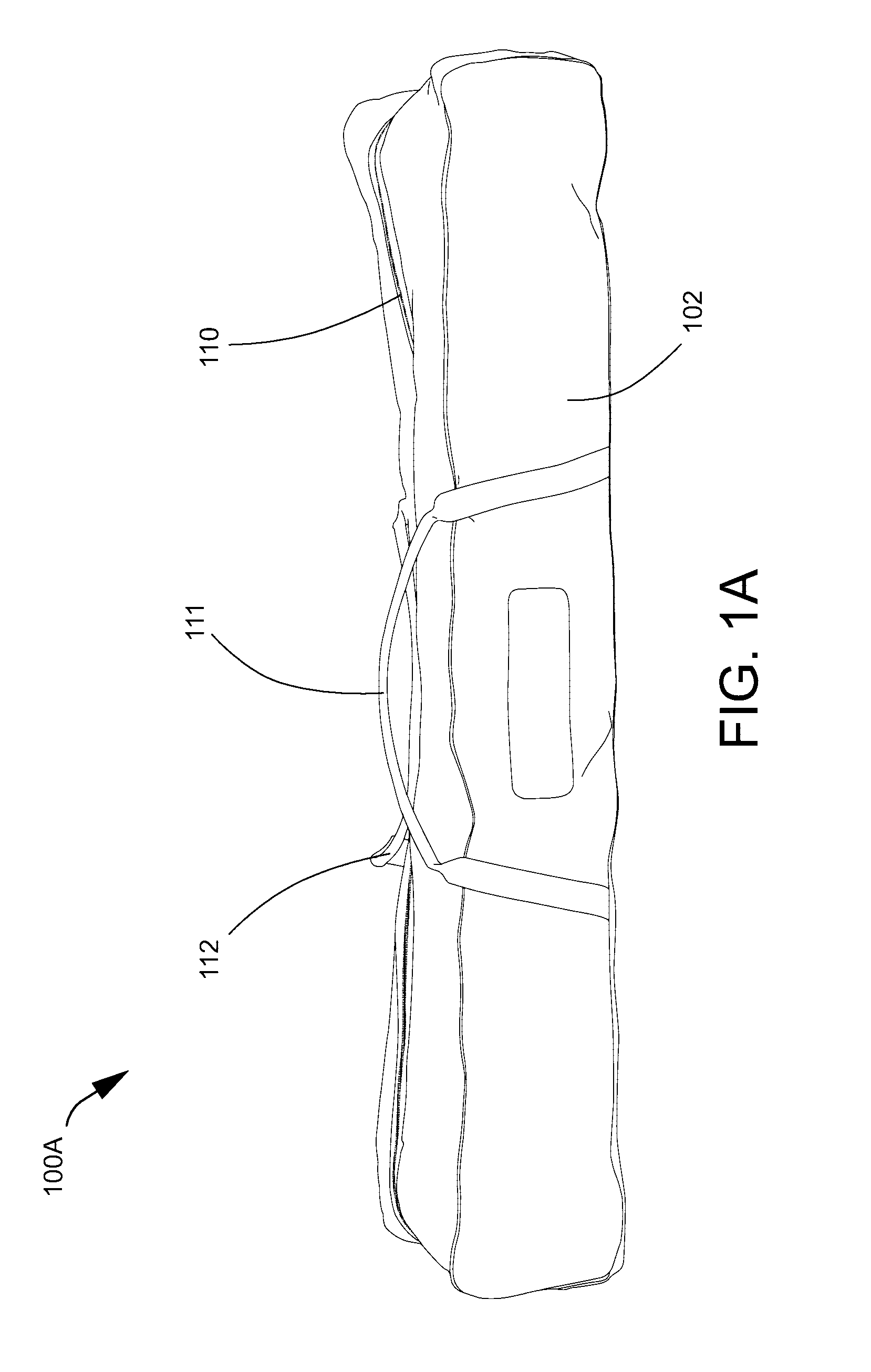In-building-communication apparatus and method
- Summary
- Abstract
- Description
- Claims
- Application Information
AI Technical Summary
Benefits of technology
Problems solved by technology
Method used
Image
Examples
Embodiment Construction
[0169]FIG. 1 is a view 100 of in-building communication system including a portable amplifier kit 101 and a portable antenna kit 102. The portable amplifier kit 101 has a rectangular shape and stands in an upright lengthwise direction. The longest side of the amplifier kit is perpendicular to the ground. The top portion of the portable amplifier kit when standing in an upright lengthwise position includes a sliding handle 103A, an indoor antenna connector port 104, an outdoor antenna connector port 105, a power switch 106, a status light 107, and a top handle 108. The sliding handle 103A extends past the top portion of the amplifier kit and is attached to the back panel of the amplifier kit. Power switch 106 and the status light 107 are located adjacent to each other with the power switch positioned closer to the front of the amplifier kit and the status light positioned more closely to the rear left corner on the top panel of the amplifier kit. The status light provides a large vis...
PUM
 Login to View More
Login to View More Abstract
Description
Claims
Application Information
 Login to View More
Login to View More - R&D
- Intellectual Property
- Life Sciences
- Materials
- Tech Scout
- Unparalleled Data Quality
- Higher Quality Content
- 60% Fewer Hallucinations
Browse by: Latest US Patents, China's latest patents, Technical Efficacy Thesaurus, Application Domain, Technology Topic, Popular Technical Reports.
© 2025 PatSnap. All rights reserved.Legal|Privacy policy|Modern Slavery Act Transparency Statement|Sitemap|About US| Contact US: help@patsnap.com



